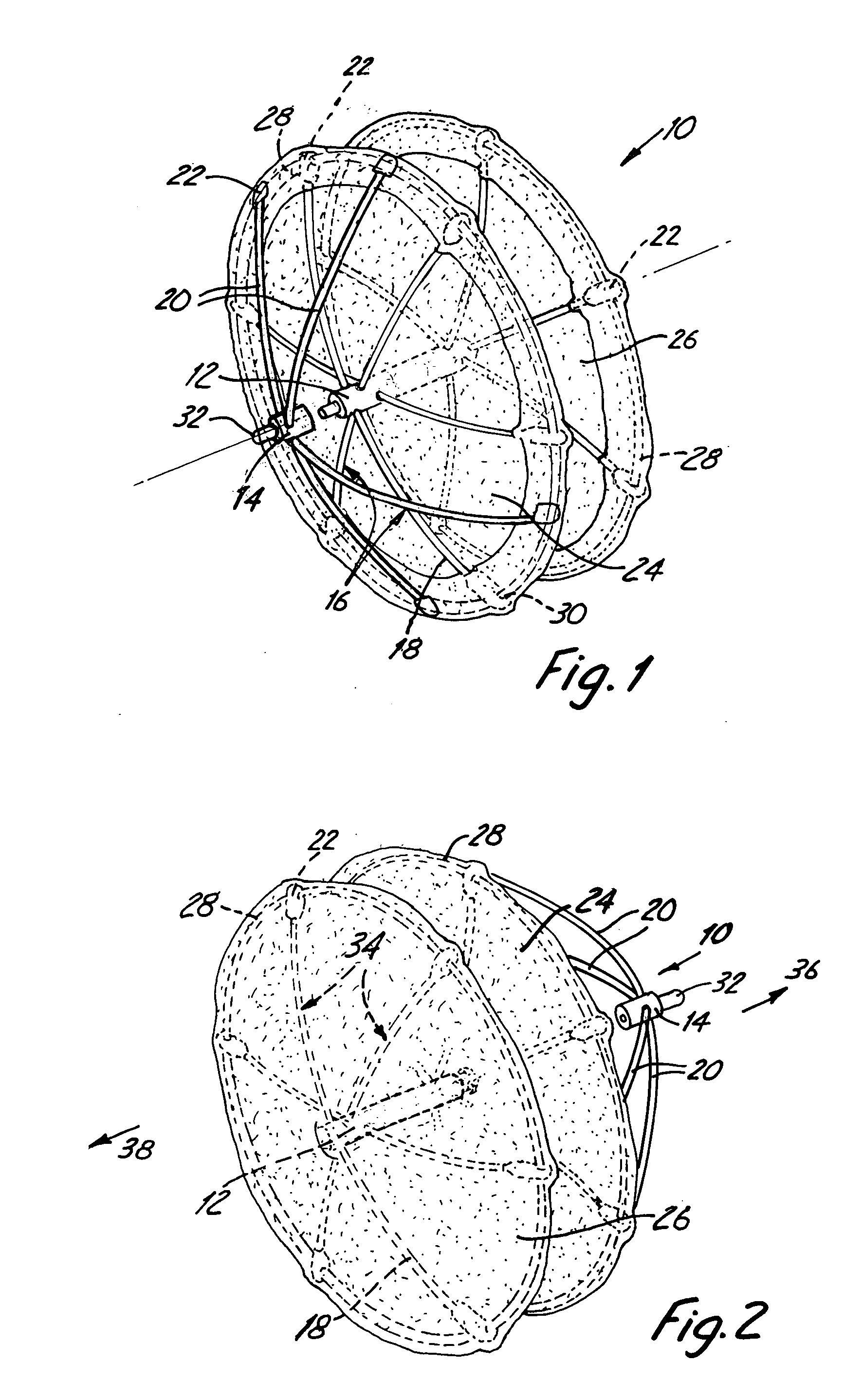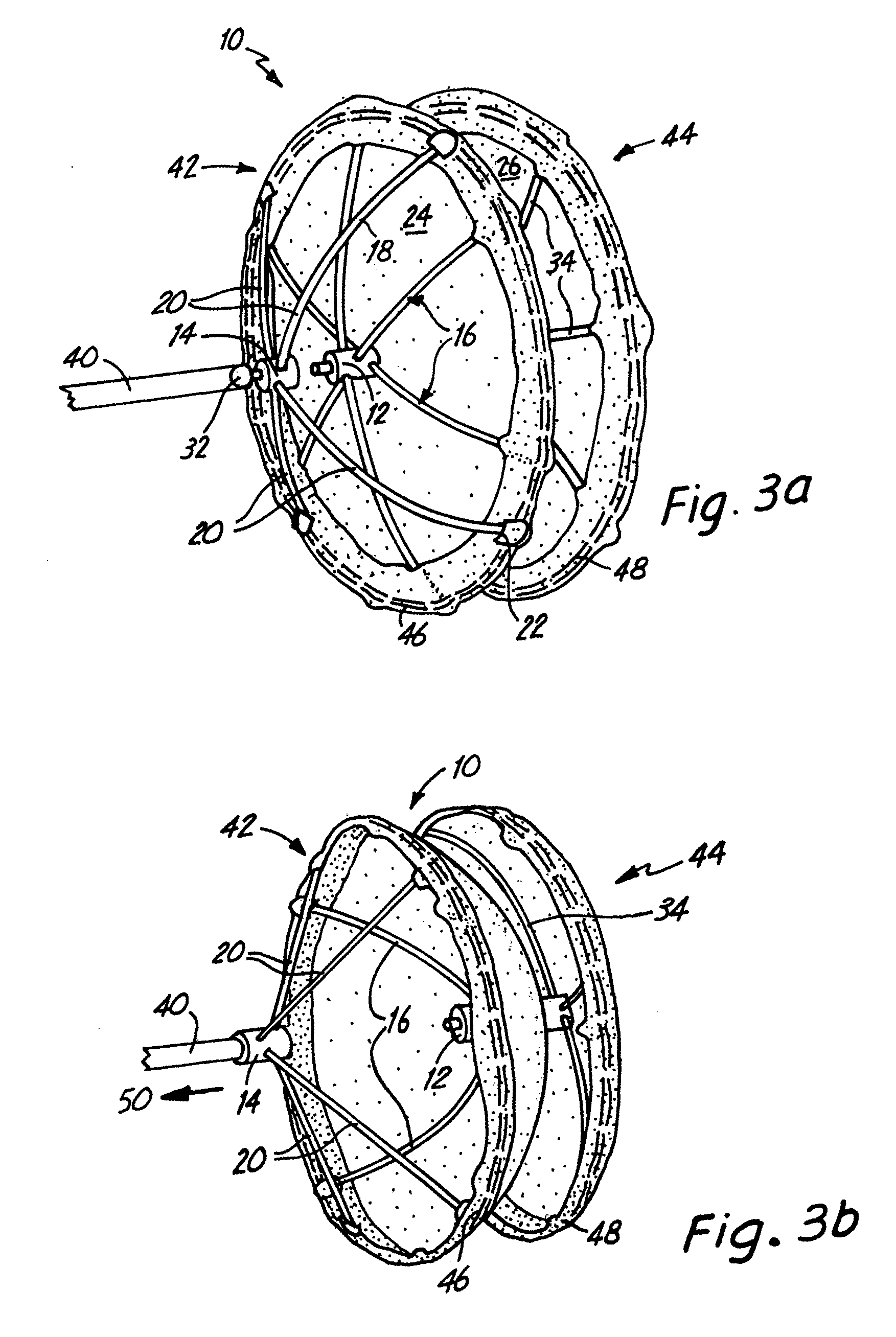Right retrieval mechanism
a right retrieval and mechanism technology, applied in the field of occlusion devices, can solve the problems of high degree of manual dexterity, time-consuming, risky, and time-consuming procedures, and achieve the effects of reducing procedure time, cost, and risk to the patient, and facilitating the initial loading of the devi
- Summary
- Abstract
- Description
- Claims
- Application Information
AI Technical Summary
Benefits of technology
Problems solved by technology
Method used
Image
Examples
Embodiment Construction
[0021]FIG. 1 is a top perspective view of an occlusion device 10. The occlusion device 10 comprises a fixed center post 12, a floating center post 14, a right fixation device 16, wire arms 18, puller arms 20, and end caps 22. The right fixation device 16 is connected to the center post 12 and comprises six wire arms 18 which are capped with the end caps 22. The puller arms 20 are threaded through holes in the floating center post 14. The ends of the puller arms 20 are also capped with end caps 22. The occlusion device 10 also includes a right sheet 24, a left sheet 26, and wire hoops 28. The hoops 28 surround the perimeter of the right and left sheets 24, 26 and pass through holes 30 in the end caps 22. A grasping knob 32 is located at the tip of the floating center post 14.
[0022]FIG. 2 is a bottom perspective view of the occlusion device 10. FIG. 2 illustrates the center post 12, the left sheet 26, and a left fixation device 34. The left fixation device 34 also comprises six arms ...
PUM
 Login to View More
Login to View More Abstract
Description
Claims
Application Information
 Login to View More
Login to View More - R&D
- Intellectual Property
- Life Sciences
- Materials
- Tech Scout
- Unparalleled Data Quality
- Higher Quality Content
- 60% Fewer Hallucinations
Browse by: Latest US Patents, China's latest patents, Technical Efficacy Thesaurus, Application Domain, Technology Topic, Popular Technical Reports.
© 2025 PatSnap. All rights reserved.Legal|Privacy policy|Modern Slavery Act Transparency Statement|Sitemap|About US| Contact US: help@patsnap.com



